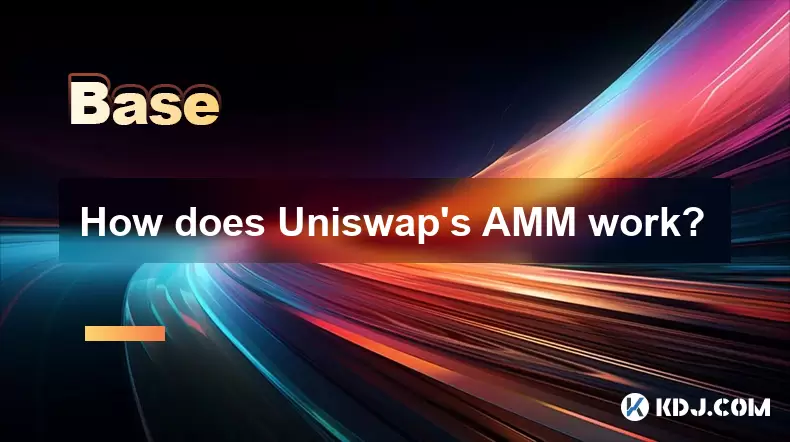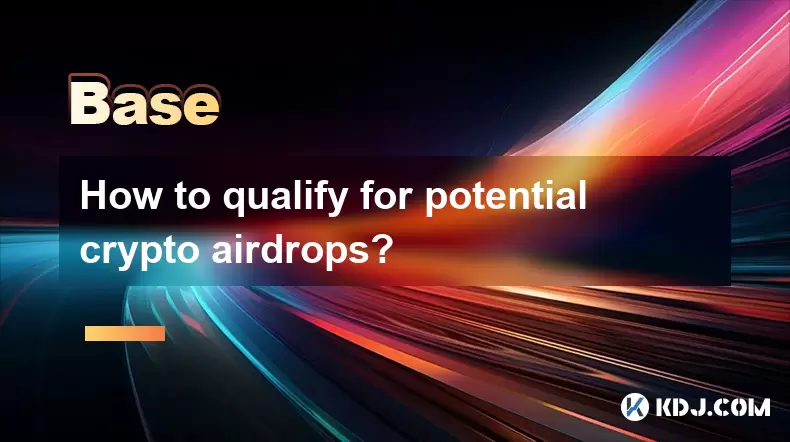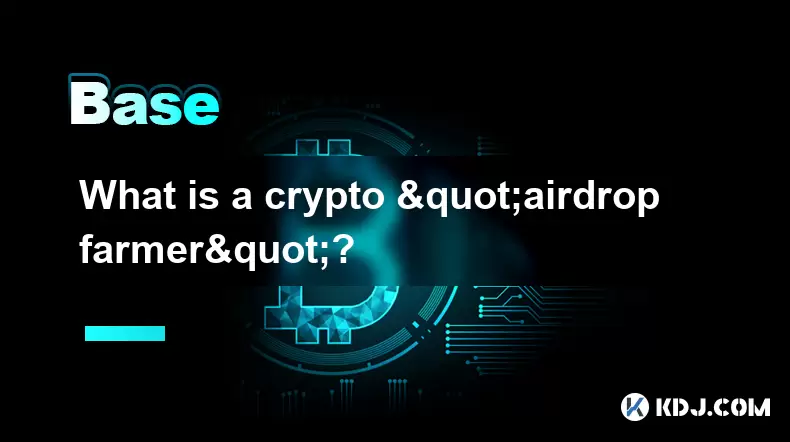-
 Bitcoin
Bitcoin $115100
-2.99% -
 Ethereum
Ethereum $3642
-1.38% -
 XRP
XRP $3.027
-5.51% -
 Tether USDt
Tether USDt $1.000
-0.05% -
 BNB
BNB $763.4
-1.32% -
 Solana
Solana $177.2
-5.42% -
 USDC
USDC $0.9999
-0.02% -
 Dogecoin
Dogecoin $0.2247
-6.47% -
 TRON
TRON $0.3135
0.23% -
 Cardano
Cardano $0.7824
-4.46% -
 Hyperliquid
Hyperliquid $42.53
-0.97% -
 Stellar
Stellar $0.4096
-6.09% -
 Sui
Sui $3.662
-2.61% -
 Chainlink
Chainlink $17.63
-3.57% -
 Bitcoin Cash
Bitcoin Cash $536.3
2.94% -
 Hedera
Hedera $0.2450
0.34% -
 Avalanche
Avalanche $23.23
-3.15% -
 Litecoin
Litecoin $112.2
-1.23% -
 UNUS SED LEO
UNUS SED LEO $8.976
-0.30% -
 Shiba Inu
Shiba Inu $0.00001341
-2.72% -
 Toncoin
Toncoin $3.101
-2.44% -
 Ethena USDe
Ethena USDe $1.001
-0.05% -
 Uniswap
Uniswap $10.08
-1.97% -
 Polkadot
Polkadot $3.938
-2.77% -
 Monero
Monero $323.9
0.87% -
 Dai
Dai $0.9999
-0.02% -
 Bitget Token
Bitget Token $4.481
-1.69% -
 Pepe
Pepe $0.00001199
-5.94% -
 Aave
Aave $288.2
-0.68% -
 Cronos
Cronos $0.1279
0.36%
How does Uniswap's AMM work?
Uniswap's AMM model uses liquidity pools and the formula $ x \times y = k $ to enable decentralized trading without order books, allowing instant token swaps and rewarding liquidity providers with fees.
Jul 24, 2025 at 02:36 pm

Understanding the Basics of Automated Market Makers
Uniswap's Automated Market Maker (AMM) model revolutionized decentralized finance (DEXs) by eliminating traditional order books. Instead of relying on buyers and sellers to create liquidity, AMMs use liquidity pools where users deposit funds to facilitate trading. Each pool consists of two tokens, forming a trading pair such as ETH/DAI. Liquidity providers (LPs) contribute both assets in equal value to the pool, and in return, they receive liquidity tokens representing their share of the pool.
The key mathematical formula behind Uniswap’s AMM is:
*x y = k,
where x and y are the reserves of the two tokens in the pool, and k is a constant. This equation ensures that the product of the reserves remains constant during trades, maintaining market equilibrium without the need for centralized order matching.
How Trading Works in Uniswap’s AMM
When a trader wants to swap one token for another, they interact directly with the liquidity pool. The price of the token is determined algorithmically based on the ratio of reserves in the pool. As a trade occurs, the balance of the tokens in the pool changes, which affects the price accordingly.
For example, if a trader swaps ETH for DAI, the amount of ETH in the pool increases while DAI decreases. As a result, the price of ETH (in terms of DAI) increases slightly due to the reduced supply of DAI. This dynamic pricing mechanism ensures that the market always has liquidity and that trades can be executed instantly, regardless of external market conditions.
The Role of Liquidity Providers in the AMM Model
Liquidity providers are essential to the functioning of Uniswap’s AMM. By depositing an equivalent value of two tokens into a pool, they enable traders to execute swaps without relying on counterparties. In return for their contribution, liquidity providers earn a share of the trading fees generated by the pool.
Each trade incurs a 0.3% fee, which is distributed proportionally to all liquidity providers in the pool. The amount earned depends on the size of the provider’s share relative to the total liquidity in the pool. However, providing liquidity also exposes users to impermanent loss, which occurs when the price of deposited tokens changes significantly compared to when they were deposited.
Implementing Smart Contracts in Uniswap’s AMM
Uniswap’s AMM relies heavily on smart contracts to manage liquidity pools and execute trades automatically. These contracts are immutable and transparent, allowing anyone to interact with them without needing permission. Each pool is governed by its own smart contract that enforces the *x y = k invariant and ensures that trades are executed fairly.
When a user initiates a trade, the smart contract calculates the appropriate amount of output tokens based on the current reserves and the fee structure. The contract then updates the pool’s balances accordingly and transfers the swapped tokens to the user’s wallet. This process is trustless, meaning users do not need to rely on intermediaries to facilitate transactions.
Slippage and Price Impact in Uniswap’s AMM
One important aspect of trading on Uniswap is understanding slippage and price impact. Since trades are executed based on the pool’s current reserves, large trades can cause significant price changes, leading to slippage, which is the difference between the expected price and the actual execution price.
To mitigate this, users can set slippage tolerance when initiating a trade. A higher slippage tolerance allows for larger trades but increases the risk of unfavorable execution. Conversely, a lower tolerance may result in failed transactions if the market moves too quickly. Understanding how slippage works is crucial for traders, especially when dealing with low-liquidity pools or volatile assets.
Token Swaps and Pool Creation on Uniswap
Uniswap allows users to swap any ERC-20 token as long as there is a corresponding liquidity pool. If a pool does not exist, users can create one by providing the initial liquidity. To create a new pool, a user must deposit an equivalent value of both tokens and set the initial price.
Once the pool is created, other users can start trading against it, and additional liquidity providers can join. The creation process is fully decentralized and permissionless, enabling anyone to launch a new trading pair without approval from a central authority.
Frequently Asked Questions
Q: Can I lose money by providing liquidity on Uniswap?
Yes, liquidity providers are exposed to impermanent loss, especially when the price of the deposited assets fluctuates significantly. This occurs because the AMM model rebalances the pool in response to price changes, potentially leaving providers with fewer tokens than they initially deposited.
Q: How are trading fees distributed to liquidity providers?
Trading fees are collected in real-time and added directly to the liquidity pool. When a liquidity provider withdraws their funds, they receive their share of the pool, including accumulated fees. The distribution is proportional to the provider’s share of the total liquidity.
Q: What happens if I try to swap a token that has no liquidity pool?
If a token doesn’t have a liquidity pool, you won’t be able to swap it on Uniswap unless you create a new pool. Creating a pool requires depositing an equivalent value of both tokens and setting the initial exchange rate. Once created, others can trade against it.
Q: Is it possible to provide liquidity with only one token?
No, liquidity providers must deposit equal value of both tokens in a pair. For example, if you want to provide liquidity for the ETH/DAI pair, you must deposit both ETH and DAI in equal USD value. This ensures the pool maintains a balanced reserve ratio.
Disclaimer:info@kdj.com
The information provided is not trading advice. kdj.com does not assume any responsibility for any investments made based on the information provided in this article. Cryptocurrencies are highly volatile and it is highly recommended that you invest with caution after thorough research!
If you believe that the content used on this website infringes your copyright, please contact us immediately (info@kdj.com) and we will delete it promptly.
- Crypto ETFs: Analyzing the 2025 Boom and Beyond
- 2025-07-26 00:30:12
- Bitcoin Swift (BTC3): Last Call for Presale Stage 1!
- 2025-07-25 23:10:12
- Altcoins of the Decade: Unearthing the Top 3 Crypto Titans
- 2025-07-25 23:50:11
- Bitcoin, Presales, and Crypto Buys: What's Hot in the NYC Crypto Scene?
- 2025-07-25 23:50:11
- BlockDAG, LINK, and Uniswap: Navigating the Crypto Landscape with Real-World Utility
- 2025-07-25 23:55:12
- Tyre Legalities and the 20p Coin Test: What Motoring Experts Want You to Know
- 2025-07-25 23:55:12
Related knowledge

What is the difference between CeFi and DeFi?
Jul 22,2025 at 12:28am
Understanding CeFi and DeFiIn the world of cryptocurrency, CeFi (Centralized Finance) and DeFi (Decentralized Finance) represent two distinct financia...

How to qualify for potential crypto airdrops?
Jul 23,2025 at 06:49am
Understanding What Crypto Airdrops AreCrypto airdrops refer to the distribution of free tokens or coins to a large number of wallet addresses, often u...

What is a crypto "airdrop farmer"?
Jul 24,2025 at 10:22pm
Understanding the Role of a Crypto 'Airdrop Farmer'A crypto 'airdrop farmer' refers to an individual who actively participates in cryptocurrency airdr...

What is the difference between a sidechain and a Layer 2?
Jul 20,2025 at 11:35pm
Understanding the Concept of SidechainsA sidechain is a separate blockchain that runs parallel to the main blockchain, typically the mainnet of a cryp...

What is the Inter-Blockchain Communication Protocol (IBC)?
Jul 19,2025 at 10:43am
Understanding the Inter-Blockchain Communication Protocol (IBC)The Inter-Blockchain Communication Protocol (IBC) is a cross-chain communication protoc...

How does sharding improve scalability?
Jul 20,2025 at 01:21am
Understanding Sharding in BlockchainSharding is a database partitioning technique that is increasingly being adopted in blockchain technology to enhan...

What is the difference between CeFi and DeFi?
Jul 22,2025 at 12:28am
Understanding CeFi and DeFiIn the world of cryptocurrency, CeFi (Centralized Finance) and DeFi (Decentralized Finance) represent two distinct financia...

How to qualify for potential crypto airdrops?
Jul 23,2025 at 06:49am
Understanding What Crypto Airdrops AreCrypto airdrops refer to the distribution of free tokens or coins to a large number of wallet addresses, often u...

What is a crypto "airdrop farmer"?
Jul 24,2025 at 10:22pm
Understanding the Role of a Crypto 'Airdrop Farmer'A crypto 'airdrop farmer' refers to an individual who actively participates in cryptocurrency airdr...

What is the difference between a sidechain and a Layer 2?
Jul 20,2025 at 11:35pm
Understanding the Concept of SidechainsA sidechain is a separate blockchain that runs parallel to the main blockchain, typically the mainnet of a cryp...

What is the Inter-Blockchain Communication Protocol (IBC)?
Jul 19,2025 at 10:43am
Understanding the Inter-Blockchain Communication Protocol (IBC)The Inter-Blockchain Communication Protocol (IBC) is a cross-chain communication protoc...

How does sharding improve scalability?
Jul 20,2025 at 01:21am
Understanding Sharding in BlockchainSharding is a database partitioning technique that is increasingly being adopted in blockchain technology to enhan...
See all articles

























































































